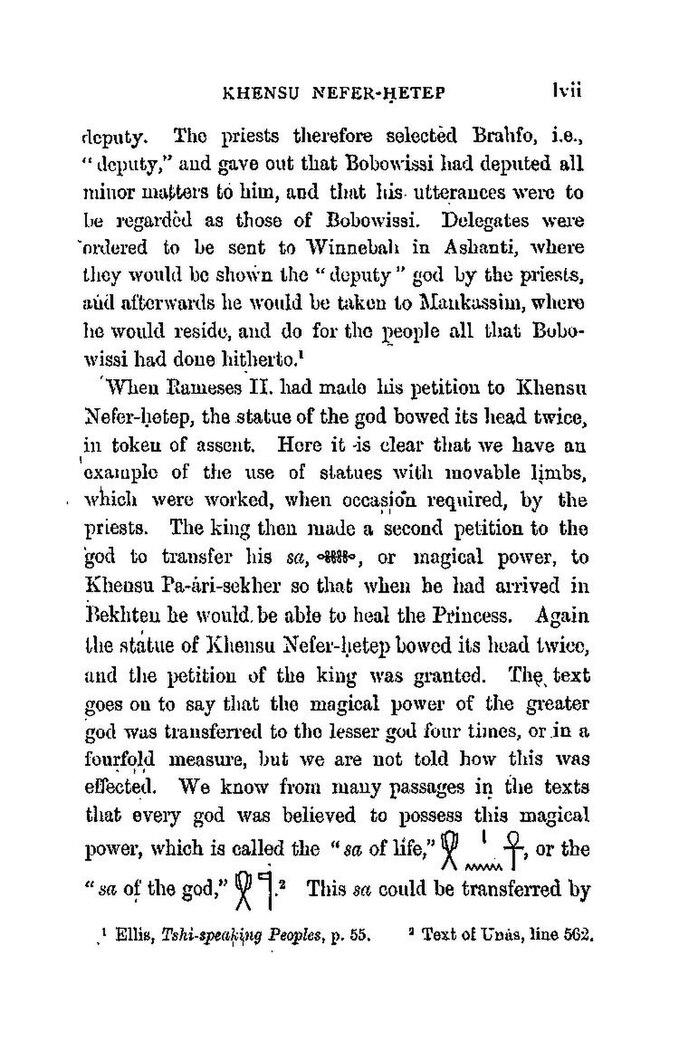deputy. The priests therefore selected Brahfo, i.e., “deputy,” and gave out that Bobowissi had deputed all minor matters to him, and that his utterances were to be regarded as those of Bobowissi. Delegates were ordered to be sent to Winnebah in Ashanti, where they would be shown the “deputy” god by the priests, and afterwards he would be taken to Mankassim, where he would reside, and do for the people all that Bobowissi had done hitherto.[1]
When Rameses II. had made his petition to Khensu Nefer-ḥetep, the statue of the god bowed its head twice, in token of assent. Here it is clear that we have an example of the use of statues with movable limbs, which were worked, when occasion required, by the
priests. The king then made a second petition to the god to transfer his sa,
| |
or magical power, to Khensu Pa-ȧri-sekher so that when he had arrived in Bekhten he would be able to heal the Princess. Again the statue of Khensu Nefer-ḥetep bowed its head twice, and the petition of the king was granted. The text goes on to say that the magical power of the greater god was transferred to the lesser god four times, or in a fourfold measure, but we are not told how this was effected. We know from many passages in the texts that every god was believed to possess this magical power, which is called the "sa of life,"
| |
or the "sa of the god,"
| |
[2] This sa could be transferred by
